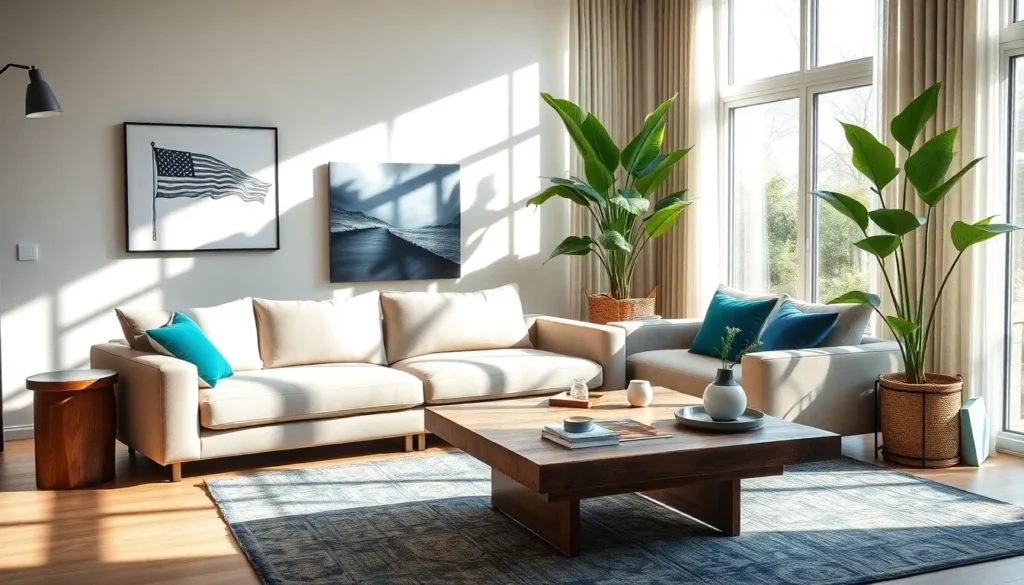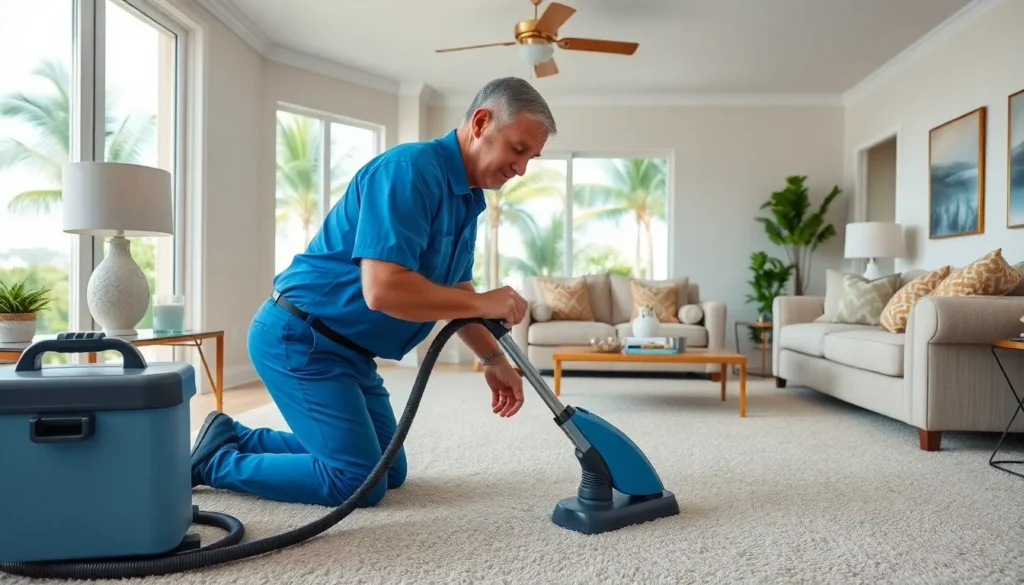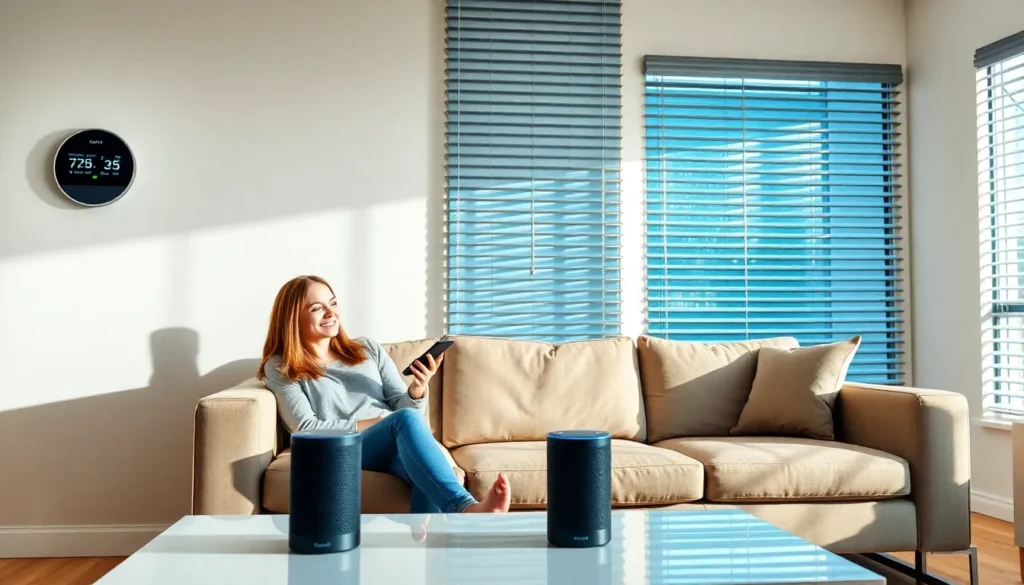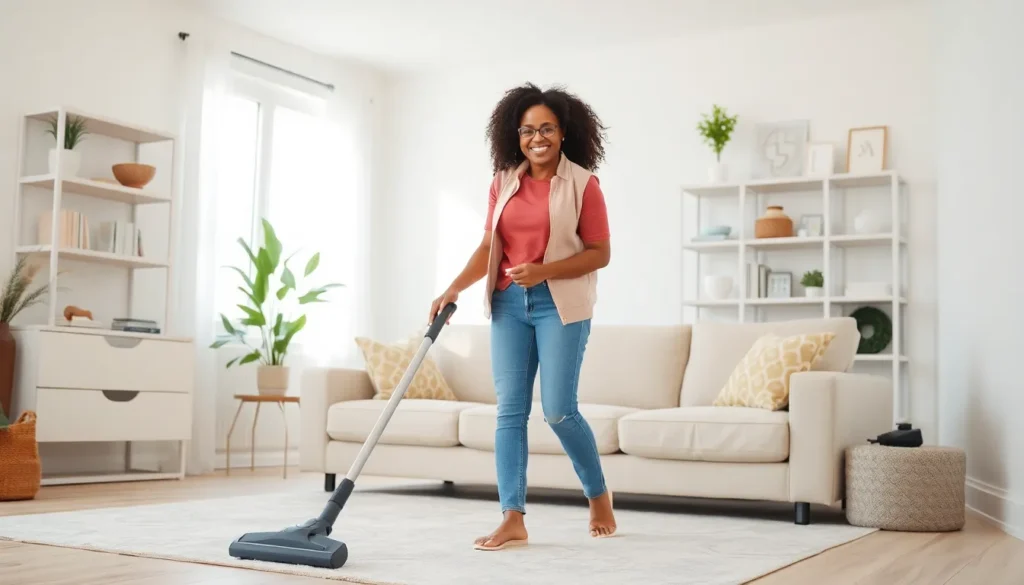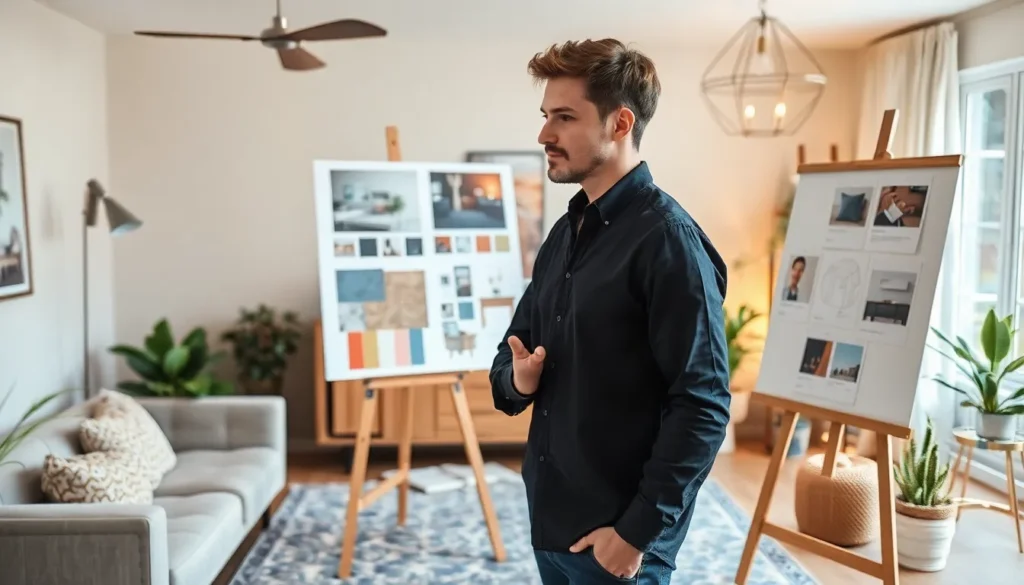Table of Contents
ToggleHome design isn’t just about choosing the right paint color; it’s a delightful journey into creativity and self-expression. As trends evolve faster than a cat meme goes viral, staying updated can feel like a full-time job. But fear not! Whether it’s embracing the minimalist aesthetic or diving headfirst into bold patterns, there’s something for everyone.
Imagine transforming your living space into a sanctuary that reflects your personality. With the right insights, you can turn your home into a stylish haven that even your in-laws will envy. From sustainable materials to smart technology, the latest trends are all about blending functionality with flair. So grab a cup of coffee, kick back, and let’s explore the exciting world of home trends and design that’ll have you dreaming of your next renovation project.
Current Home Trends and Design
Sustainable design increasingly influences homeowners’ decisions. Eco-friendly materials, including bamboo and recycled glass, contribute to environmentally conscious living spaces. Smart technology finds its way into homes, enhancing convenience with features like automated lighting and energy-efficient thermostats.
Minimalist aesthetics continue to capture attention. Clutter-free spaces reflect a sense of calm and simplicity, often utilizing neutral color palettes accented by bold furniture pieces. Open floor plans remain popular, allowing natural light to flow throughout living areas.
Maximalism contrasts the minimalist approach, embracing vibrant colors and eclectic decor. Layered textures and statement art pieces create visually stimulating environments. This trend encourages creativity, showcasing individual personality through various design elements.
Biophilic design gains traction, bringing nature indoors. Incorporating indoor plants, natural light, and organic shapes fosters a connection to the outdoors. Designers often use large windows and green walls to blur the lines between interior and exterior spaces.
Home offices become essential as remote work persists. Ergonomic furniture and dedicated workspaces enhance productivity. Designers prioritize comfort while maintaining aesthetic appeal, blending functionality with style.
Multi-functional spaces address the need for flexibility. Rooms accommodate various purposes, such as guest rooms doubling as home gyms. Adjustable furniture, like foldable tables and modular sofas, optimize space efficiency.
Color trends shift toward earthy tones and soft pastels. Warm hues create inviting atmospheres, promoting relaxation in everyday settings. This shift moves away from stark whites and towards more comforting shades.
Current home trends reflect a dynamic blend of personal expression and practical considerations. By embracing these diverse styles, homeowners create unique environments that cater to their lifestyles.
Popular Design Styles
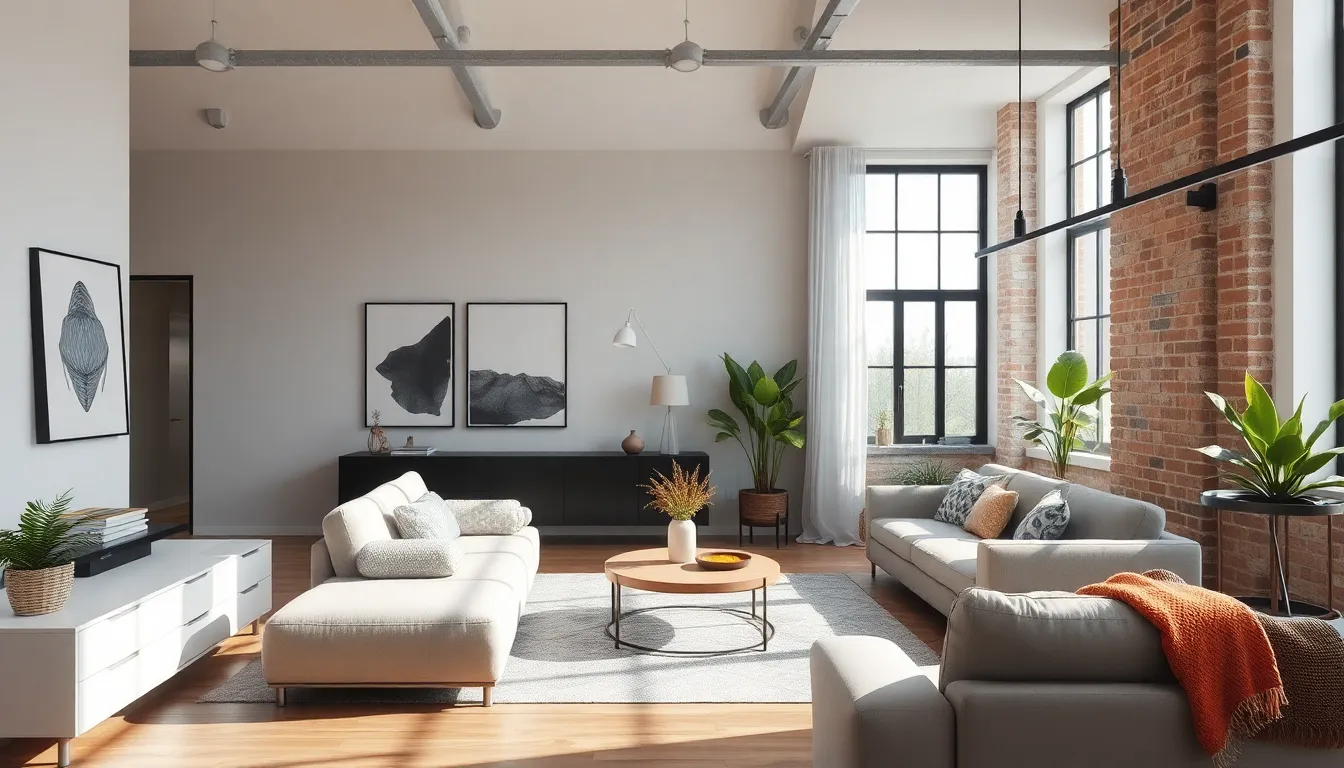
Home design styles continuously evolve, offering various ways to express personal aesthetics. Each style reflects unique characteristics that resonate with individual preferences.
Minimalism
Minimalism focuses on simplicity and functionality. Spaces often feature clean lines, neutral colors, and an uncluttered atmosphere. Furniture choices tend to emphasize form over ornamentation, making quality essential. Natural light plays a significant role, illuminating sleek surfaces and enhancing openness. The principle of “less is more” guides the approach, resulting in tranquil environments that prioritize well-being. Art selection typically includes a few impactful pieces rather than busy displays. This style aims to create serene living areas that foster clarity and peace.
Bohemian
Bohemian design embodies an eclectic mix of colors, patterns, and textures. Layered textiles, vibrant artwork, and unique decor items create an inviting atmosphere. Personal artifacts and travel souvenirs often enhance the character of the space. Furniture is usually a combination of vintage finds and artisanal pieces, combining practicality and comfort. Plants play an essential role, adding life and a touch of nature. Customization reflects the individual’s personality, making each space genuinely one-of-a-kind. Vivid hues and diverse materials inspire creativity, encouraging a relaxed, laid-back vibe in homes.
Industrial
Industrial design draws inspiration from warehouses and urban environments. Raw materials like exposed brick, metal fixtures, and reclaimed wood define the aesthetic. Open layouts often showcase high ceilings and large, unobstructed spaces. The style incorporates both modern and vintage elements, creating a striking balance. Industrial furniture tends to emphasize durability and functionality, often featuring sturdy designs. Lighting typically includes pendant lamps and exposed bulbs, enhancing the raw aesthetic. This style celebrates urban chic while making a bold statement in residential spaces, perfect for creative individuals.
Color Palettes in 2023
Color trends for 2023 reflect a desire for warmth and comfort in homes. A mix of neutral and bold palettes offers diverse options for various tastes.
Neutral Tones
Neutral tones dominate the color scene this year, promoting calm and tranquility in spaces. Shades like beige, taupe, and soft gray create inviting environments, allowing for seamless integration of decor elements. These hues pair well with natural materials, enhancing the warmth of wooden features and organic textiles. Accents of cream or off-white can soften darker furnishings, maintaining a cohesive look. Homeowners increasingly choose neutral tones for walls and larger furniture pieces, easily complemented by color pops from accessories. This palette supports a minimalist aesthetic while remaining versatile, adaptable to evolving design preferences.
Bold Colors
Bold colors make a statement in 2023, encouraging creativity and self-expression. Rich jewel tones like emerald green, deep blue, and vibrant red add energy to spaces, creating focal points in rooms. These shades perform effectively when used on accent walls, pieces of furniture, or decorative elements, providing striking contrasts against neutral backgrounds. Homeowners experiment with splashes of color in unexpected areas, inspiring dynamic and eclectic decor. Maximalism continues to thrive, embracing playful combinations of bold colors and various textures. Layering these striking tones invites personal stories, transforming living spaces into unique reflections of their inhabitants.
Sustainable Design Practices
Sustainable design focuses on creating spaces that are environmentally responsible and resource-efficient. Increasingly, home designers integrate practices that minimize impact on the planet.
Eco-Friendly Materials
Homeowners are prioritizing eco-friendly materials in their renovations. Bamboo, a fast-growing resource, offers durability and style. Recycled glass adds a unique aesthetic while reducing waste. The use of reclaimed wood not only enhances character but also decreases deforestation. Natural fibers like cotton and linen gained popularity because they provide comfort without harming the environment. Additionally, low-VOC (volatile organic compounds) paints and finishes ensure healthier indoor air quality. Incorporating these materials leads to spaces that reflect sustainable living while maintaining beauty.
Energy Efficiency
Maximizing energy efficiency in homes contributes to sustainability. Energy-efficient appliances are designed to use significantly less energy than standard models. Smart technology, such as programmable thermostats, allows users to regulate heating and cooling efficiently. Proper insulation prevents heat loss, reducing energy consumption year-round. Solar panels provide renewable energy and lower utility bills. Homeowners increasingly recognize the long-term savings from investing in energy-efficient solutions. Incorporating these features not only promotes sustainability but also enhances overall comfort in living spaces.
Furniture and Decor Innovations
Innovations in furniture and decor are shaping modern living environments. These advancements focus on enhancing functionality and integrating technology to meet contemporary needs.
Multi-Functional Furniture
Multi-functional furniture has become essential in maximizing space and adaptability. Items like sofa beds, foldable desks, and storage ottomans efficiently serve various purposes. Popular designs can transform a guest room into a comfortable workspace during the day. These versatile pieces support urban living, enabling homeowners to maintain style without sacrificing functionality. For example, a coffee table can convert into a dining table, accommodating guests while optimizing space. Moreover, manufacturers increasingly prioritize designs that blend seamlessly with existing decor, making it easy to find pieces that fit personal style.
Smart Home Technology
Smart home technology revolutionizes how homeowners interact with their living spaces. Features like automated lighting and energy-efficient appliances enhance convenience and efficiency. In 2023, programmable thermostats and smart security systems gain traction for improving energy management and safety. Homeowners appreciate the ability to control devices remotely, ensuring comfort regardless of location. Additionally, advancements in integrated systems streamline the user experience, allowing for voice-activated controls and personalized settings. Such innovations enable homeowners to create a smart ecosystem, optimizing energy use while enhancing daily living.
Embracing the latest home design trends can transform any space into a personal haven. By blending sustainability with innovative technology homeowners can create environments that are both stylish and functional. The shift toward eco-friendly materials and smart home features not only enhances aesthetics but also promotes healthier living.
As trends evolve the importance of personal expression remains paramount. Whether opting for minimalist serenity or maximalist vibrancy each choice reflects unique tastes and lifestyles. With thoughtful planning and a focus on current design principles every homeowner can craft a space that resonates with their individuality while staying in tune with the future of home design.

